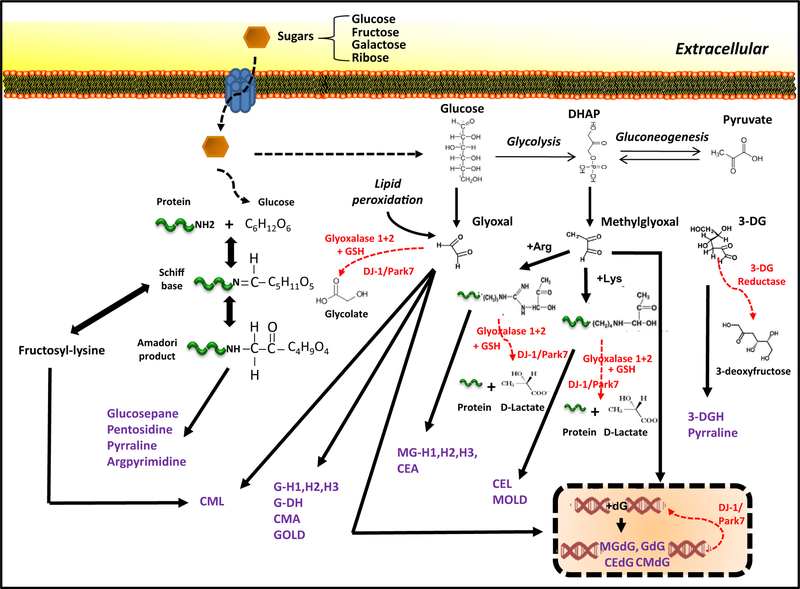Fig. 1.
Formation and detoxification of advanced glycation end-products (AGEs) from dietary sugars. AGEs are derived by different pathways including Maillard reaction with the generation of Schiff bases and Amadori products and reactions that involve oxaldehydes (glyoxal, methylglyoxal, 3-deoxyglucosone) derived, in part, from glycolytic intermediates. Fructosyl-lysine, a fructosamine, is an Amadori product that can further go on to form CML. Detoxifying routes (highlighted in red) and AGEs (highlighted in purple) are shown. DHAP: dihydroxyacetone phosphate; GSH: reduced glutathione; CML: Nε-(carboxymethyl)-lysine; CMA: Nε-(carboxymethyl)-arginine; GOLD: glyoxal-derived lysyl dimer; 3-DG: 3-deoxyglucosone; GH-1,2,3: glyoxal-derived hydroimidazolone; MGH-1,2,3: methylglyoxal-derived hydroimidazolone; CEL: Nε-(carboxyethyl)-lysine; CEA: Nε-(carboxyethyl)-arginine; MOLD: methylglyoxal-derived lysine dimer; dG: deoxyguanosine residue on DNA; GdG: 3-(2′-deoxyribosyl)-6,7-dihydro-6,7-dihydroxyimidazo-[2,3-b]purin-9(8)one; CMdG: N2-carboxymethyl-deoxyguanosine; MGdG: 3-(2′-deoxyribosyl)-6,7-dihydro-6,7-dihydroxyimidazo-[2,3-b]purin-9(8)one; CEdG: N2-(1-carboxyethyl)-deoxyguanosine.

